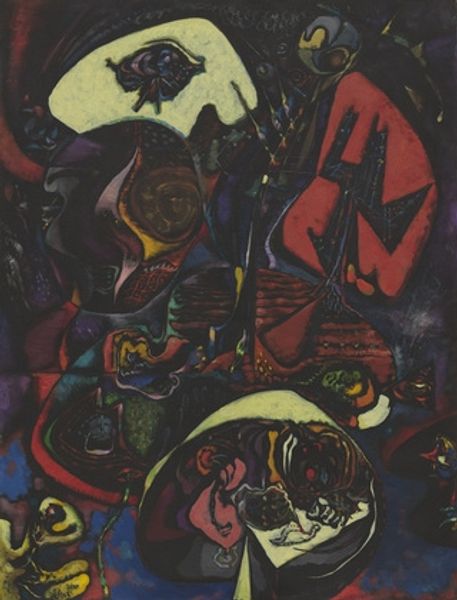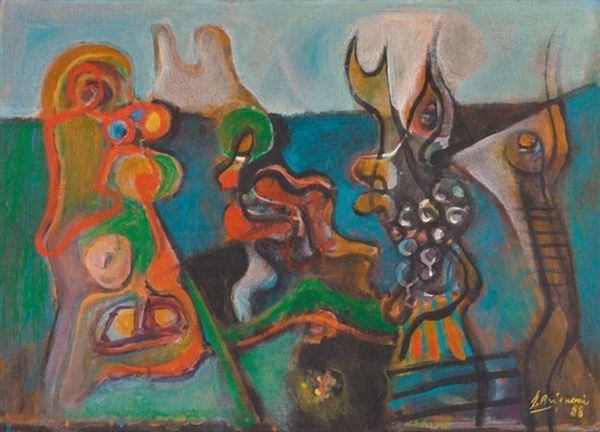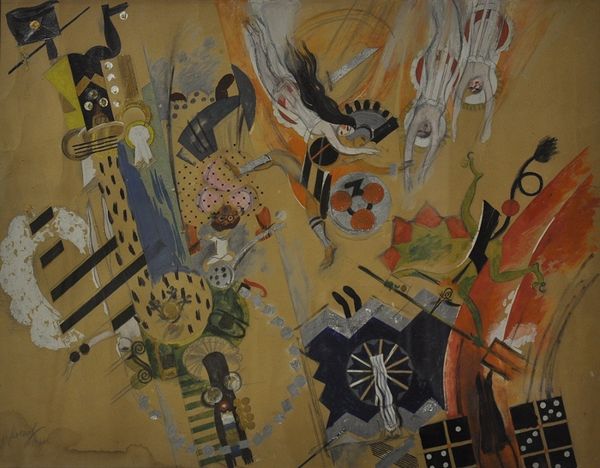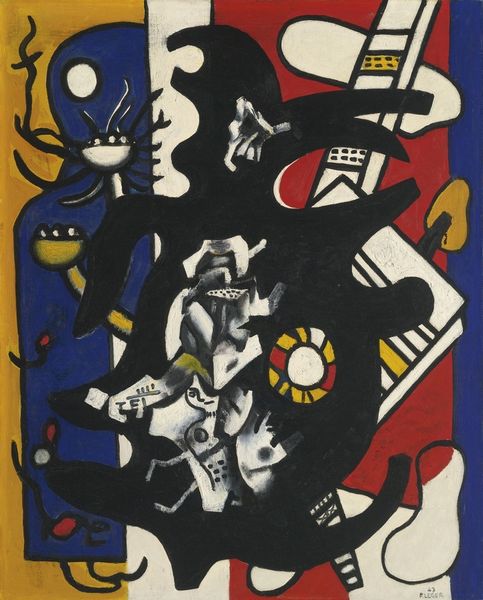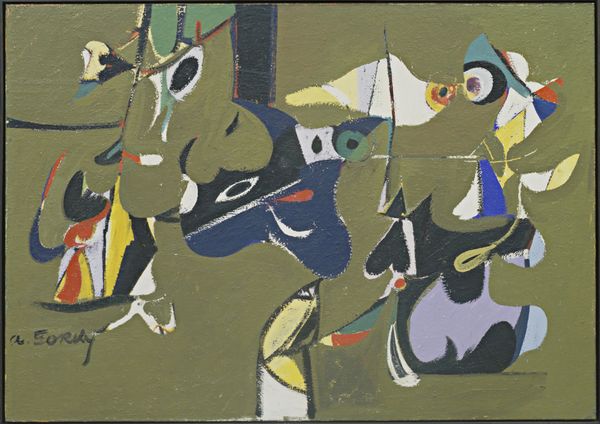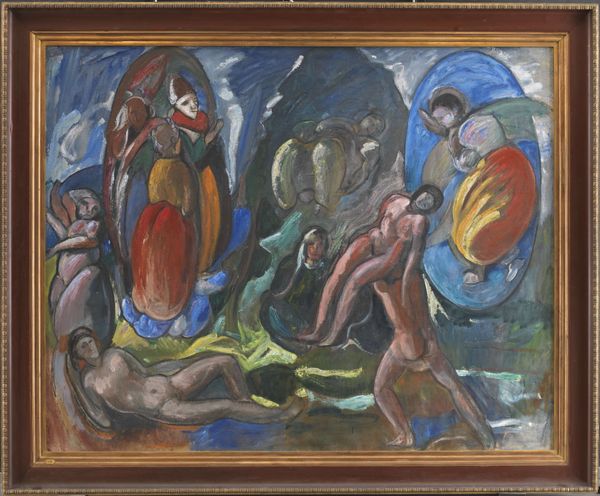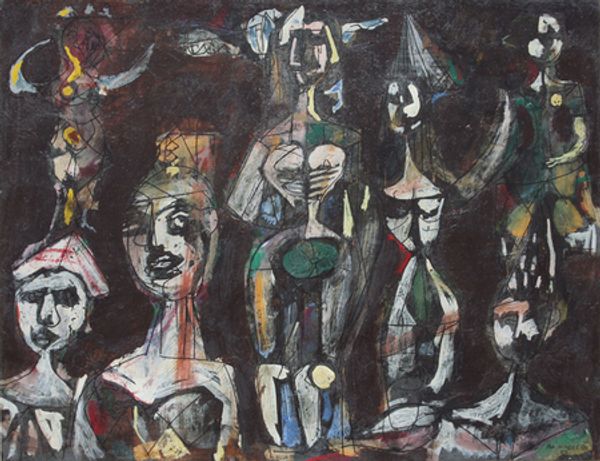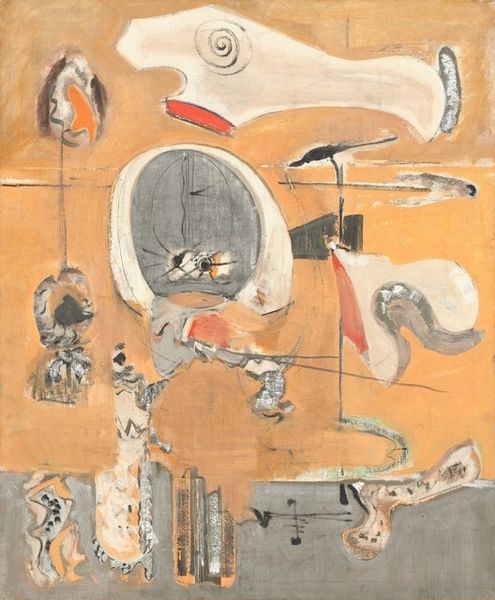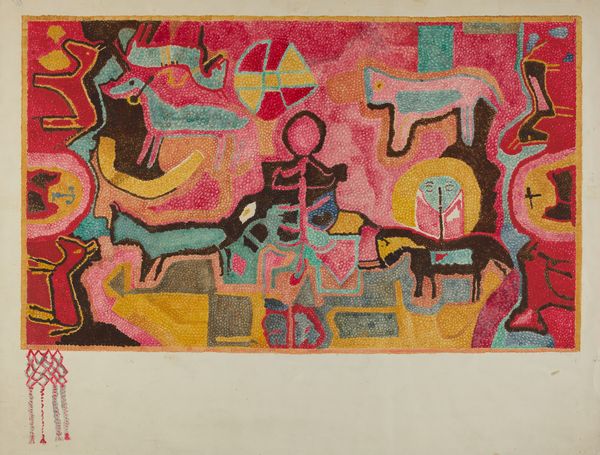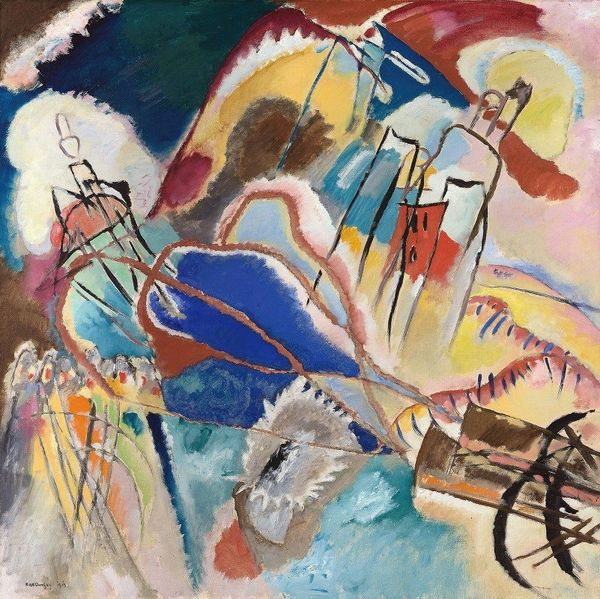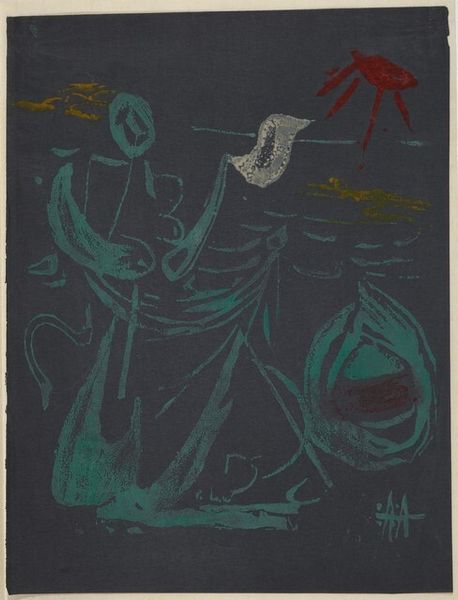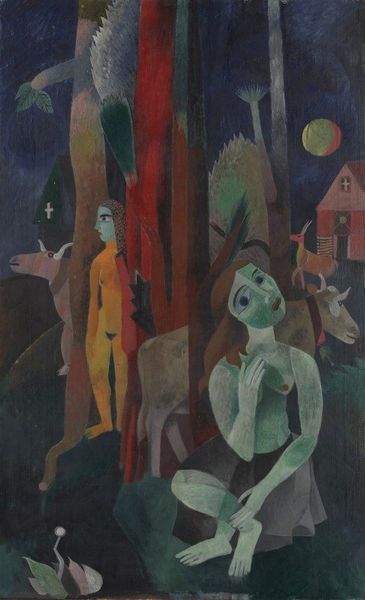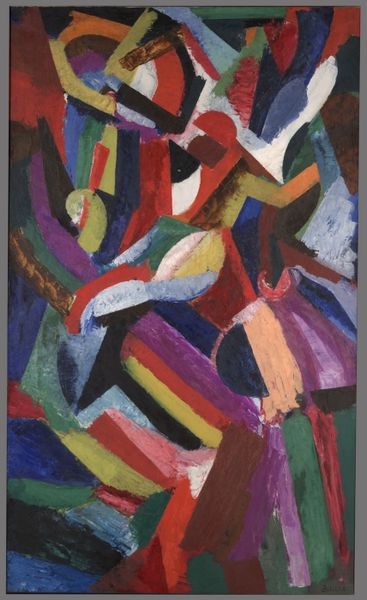
Dimensions: support: 1395 x 1066 mm frame: 1499 x 1181 x 83 mm
Copyright: © DACS, 2014 | CC-BY-NC-ND 4.0 DEED, Photo: Tate
Editor: So, this is Constant's "After Us, Liberty," a large painting at the Tate Modern. It’s, well, a bit unsettling. All these strange faces and figures against a dark background… What do you make of this piece? Curator: It certainly is striking. Considering Constant’s involvement with the Situationist International, this piece could be read as a critique of post-war society. Note the fragmented figures, the almost grotesque imagery. Doesn't it suggest a breakdown of traditional values and a questioning of the very idea of "liberty" after the war? Editor: That's a very interesting point. So, it's not just a random collection of images, but a commentary on society? Curator: Precisely. It encourages us to consider how social and political contexts influence artistic expression, and how art, in turn, can challenge those contexts. A call for change? Editor: I see what you mean. Thanks, that gives me a lot to think about.
Comments
tatemodern 7 months ago
⋮
http://www.tate.org.uk/art/artworks/constant-after-us-liberty-t03705
Join the conversation
Join millions of artists and users on Artera today and experience the ultimate creative platform.
tatemodern 7 months ago
⋮
Constant believed that spontaneity and free expression could transform culture. He was fascinated by the uninhibited art of children and untrained artists. The wild figures here are a mixture of human and animal. Real and imagined animals feature in many of Constant’s works. He kept dogs, cats, a baboon and an iguana as pets, and was a frequent visitor the Amsterdam zoo. Originally this work was called ‘To Us, Liberty’. Constant retitled it to reflect his ‘doubts about the possibility of “free art" in an unfree society’. Gallery label, June 2020
